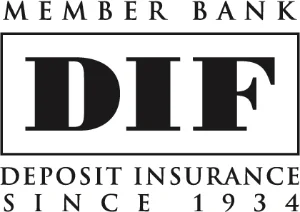One of the biggest misconceptions about banks involves bank insurance. Specifically, many people believe that the FDIC and SIF insurance they hear so much about covers them for various kinds of losses, sort of like an insurer of last resort.
And if the bank insurance won’t cover them, surely the bank will, right?
It reminds me of the Seinfeld episode where Jerry’s out-of-warranty stereo stopped working and Kramer hatched a scheme to mail the broken stereo insured to Jerry so the post office would “have to pay for it.”
Jerry was skeptical but Kramer told him it was just a “write-off” for places like big companies and the post office. Jerry questioned whether Kramer even knew what a write-off was. “I don’t,” Kramer conceded. “But they do and they’re the ones writing it off.” (The post office caught on to Kramer’s scheme and refused to pay.)
Banks know what write-offs are too. They happen. But like the post office and as part of our fiduciary duty to protect depositors’ money, banks tend to look very carefully to make sure any write-offs are absolutely legitimate.
For the record, FDIC and SIF insurance cover depositors (up to stated limits) against a bank failing. Neither FDIC or SIF insurance covers customers against theft from their accounts.
When it comes to theft from their accounts, consumers can protect themselves by reviewing every bank statement carefully every month and reporting any concerns or discrepancies to the bank immediately.
“Immediately” is the key word there. Discrepancies have to be reported within a window of usually 30 to 60 days.
After that time, banks no longer have to make a customer whole and, as a policy, most don’t. Why? Since time is of the essence in having a chance to recover stolen funds, banks need to insist that any problems are brought to their attention right away.
By the way, most customers who “see something wrong” in their account contact their bank instantly, if not sooner. They’re easily within that 30 to 60 day window. Bankers see that all the time. If the customer has been a victim of theft or fraud and contacts their bank right away, the bank can refund their money and pursue the criminals (when possible).
Unfortunately, there’s another kind of situation bankers occasionally see. Let’s call it a “Kramer.” It doesn’t happen every day but it certainly happens enough that bankers recognize the pattern immediately.
A customer comes in and says they don’t recognize a charge. They want the bank to refund their money. Except they haven’t reviewed their statements in months and this problem occurred almost a year ago. Or a call to the vendor brings up proof that the charge to the customer was legitimate. Or the theft seems likely to have been committed by someone known to the customer – often a friend or family member – and the customer does not want the local police involved. In those cases, the customer is not going to “get their money back.”
As with Seinfeld’s broken stereo, sometimes something occurs and there is no one to turn to who’ll make up the loss. That happens all the time. It’s lousy, but that’s how life is.
When it comes to your bank accounts, you actually have a significant amount of control as long as you keep an eye on your statements and report anything suspicious immediately. The good news is that your first line of protection is you.
As a depositor, you are backed up by your bank in two ways:
1) When you reach out to your bank immediately to report a problem, most times they will make you whole, and quickly.
2) By recognizing and not paying obviously-fraudulent “write-offs,” the bank is protecting depositors’ money. That’s you!
Nick Maffeo is the President & CEO of Canton Co-operative Bank in Canton. “Smart About Money” is a regular column he writes for the Canton Citizen. Have a financial question you’d like to ask? Email to info@cantoncoopbank.com.


